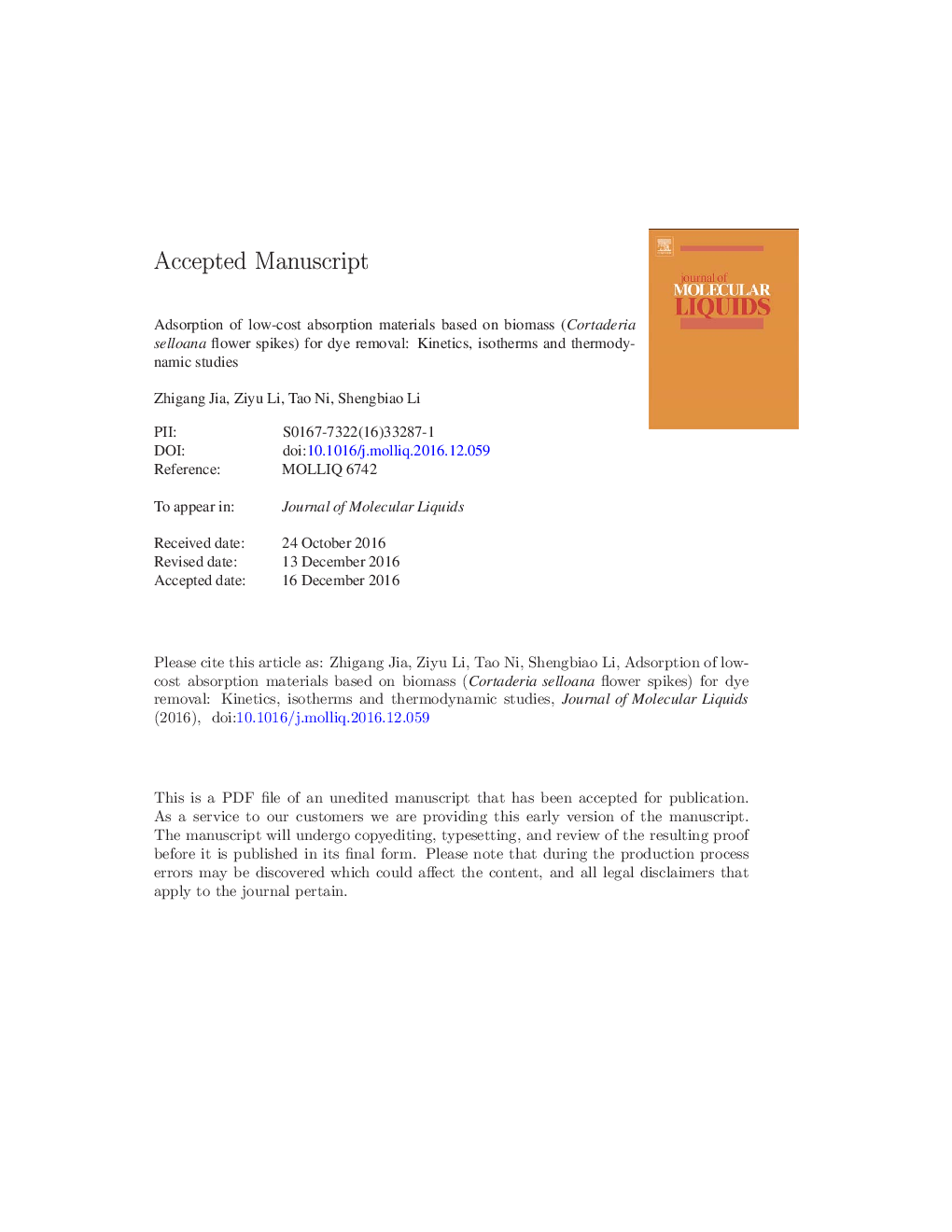| Article ID | Journal | Published Year | Pages | File Type |
|---|---|---|---|---|
| 5409151 | Journal of Molecular Liquids | 2017 | 37 Pages |
Abstract
In this study, biomass and biomass-derived carbon fiber materials, Cortaderia selloana flower spikes and Cortaderia selloana flower spikes derived carbon fibers, are employed as novel and low-cost adsorption material to remove methylene blue (MB) for simulated wastewater. Carbon fiber materials (CFs) are prepared by novel air-limited calcination method with Cortaderia selloana flower spikes (FSs) as the precursor. The adsorbents are characterized by using SEM, FTIR and XPS analyses, respectively. Batch of adsorption experiments are conducted to investigate the effect of pH, initial pollutant concentration, contact time and temperature. The Cortaderia selloana flower spikes derived carbon fibers show the enhanced MB removal performance with maximum adsorption capacity of 114.3 mg gâ 1, which is almost three times as high as Cortaderia selloana flower spikes as adsorbent. The adsorption isotherm can be better defined by Langmuir model than other models. The adsorption kinetic follows the pseudo-second-order model. The negative value of â³Go and the positive value of â³Ho indicate spontaneous and endothermic nature of MB adsorption. The low-cost biomass-derived adsorption materials are promising for the practical application of reducing the pollution of the textiles manufacturing.
Keywords
Related Topics
Physical Sciences and Engineering
Chemistry
Physical and Theoretical Chemistry
Authors
Zhigang Jia, Ziyu Li, Tao Ni, Shengbiao Li,
